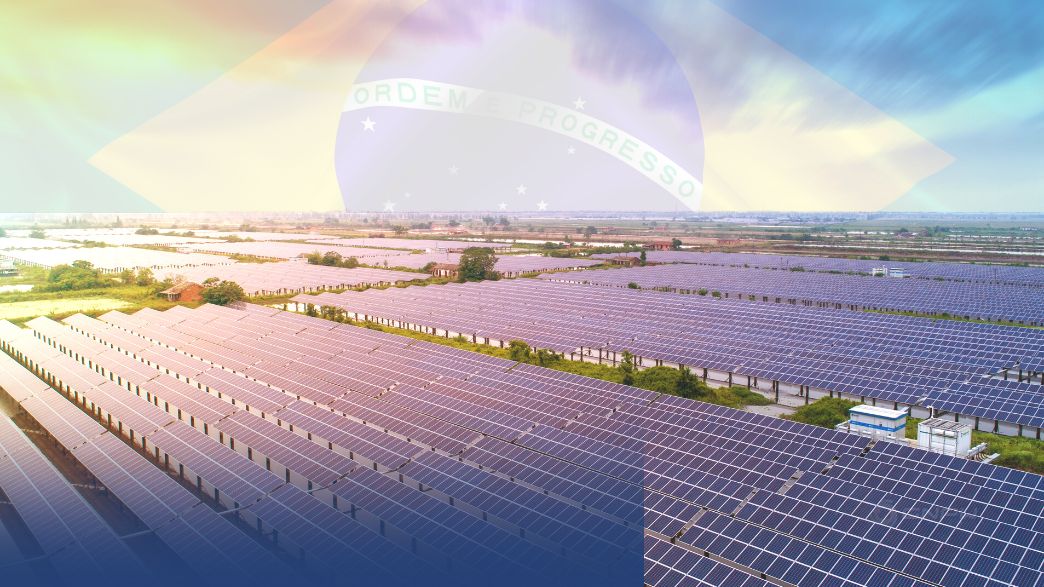Between 2019 and 2022, distributed solar source generation took a leap in Brazil, greatly impacted by water scarcity and growth in the value of the energy bill. Understand better.
The growth in demand for solar energy in Brazil reflects the trend observed worldwide in the search for alternatives to fossil fuels. In addition to several warnings issued by specialists around the increase in global warming caused by greenhouse gases, the war between Russia and Ukraine highlighted the urgency of the need for countries, especially European countries, to invest in other sources of energy to avoid dependence on the Russian gas.
Due to this whole context, the world is committed to investing in renewable energy sources, in which Brazil obtains a prominent place due to its geographic characteristics and the abundant supply of natural resources.
In view of this, it is expected that, in the medium term, the country will become the protagonist in terms of clean energy, especially in relation to solar energy. According to the International Renewable Energy Agency (IRENA), in 2022, solar energy in Brazil entered the list of the ten largest markets in this regard and tends to climb even more.
See, below, the panorama of solar energy in Brazil.
The growth of solar in Brazil
The world has been rapidly adopting solar energy over the past decade. In fact, many countries have launched solar energy programs to reduce their dependence on fossil fuels, and Brazil is no different. It is expected that, soon, this source of energy will surpass wind energy, with 22.4 GW, and become the second largest in the Brazilian matrix, behind only hydroelectric power.
According to the National Electric Energy Agency (ANEEL), the pace of investments in solar energy has grown exponentially, especially when it comes to distributed generation. Currently, we have 18.7 GW of installed power, 12.7 GW of which is distributed generation and 6 GW is centralized generation.
In the first eight months of the year, 3.5 GW of distributed generation were created, with at least 4 GW of this type expected to be installed, according to the Brazilian Association of Distributed Generation (AGBD), in addition to 2.3 GW of centralized generation until the end of the year.
If this expectation is fulfilled, therefore, solar energy in Brazil will surpass wind energy and become the second largest in our country’s electrical matrix by the beginning of 2023, with 25 GW.
For this increase to materialize, some factors will be needed, such as: micro and macroeconomic conditions that impact investments mainly, exchange rate, inflation and access to credit. Thus, if the projection comes true, we will have a 91% increase in installed capacity compared to 2021.
Public policies for the development of solar energy in Brazil
Since 2012, solar energy has already brought to the country more than R$90 billion in new investments, R$24.6 billion in public coffers and generated more than 514 thousand accumulated jobs. In addition, it also avoided the emission of 25.5 million tons of CO2 in electricity generation.
The growth of solar energy in Brazil is due to public policies, as well as private initiative investment and increased consumer interest. According to the consultancy Greener, in the first half of 2022 alone, the Brazilian market for DG and centralized generation should move BRL 35 billion in investments in the short and medium term.
According to the President of ABSolar, growth should remain high until the end of 2023, mainly due to the deadline of January 6, 2023 for project filing, to guarantee discounts in the system until 2045.
Brazil has committed to achieving emissions neutrality by 2050 and to reduce its emissions by 50%. Therefore, it is essential that governments mobilize to achieve the goals.
In this sense, investing in renewable energy is interesting because, in addition to environmental goals, it stimulates the economy and prevents the country from becoming hostage to fluctuations in fuel prices on the world market or the availability of water resources.
With the increase in investments in technology, renewable sources have reduced implementation costs and prices for end consumers, increasing competitiveness and reducing emissions. To learn more about solar energy projects, contact us.

Comment